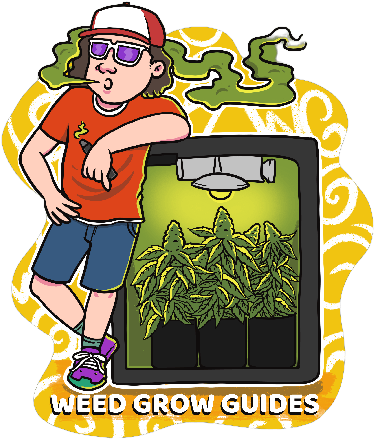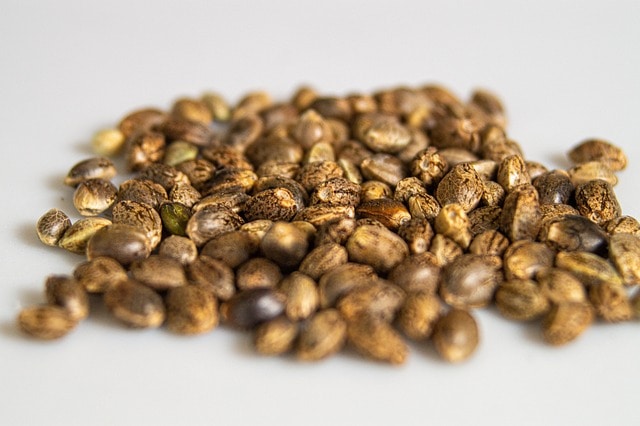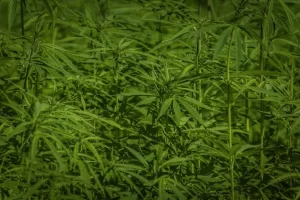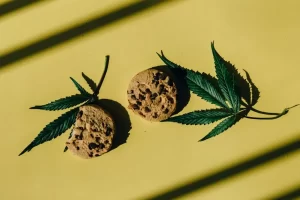How To Fix Sick Weed Plants
Weed plants can get a variety of disease, mineral deficiencies, or nutrient deficiencies which can impact your grow, but weed plants can get sick and die for a variety of reasons. The most common reasons include:
- Overwatering or under-watering: Overwatering your weed plant can lead to root rot, while under-watering can cause stress to the plant and make it more susceptible to disease.
- Bugs and Diseases: Bugs such as spider mites, aphids, and whiteflies can attack and damage marijuana plants, while diseases like powdery mildew, root rot, and botrytis can also lead to a major disappointment and a tragic end to your plant.
- Nutrient Deficiencies: If a plant does not receive the proper nutrients, it can become stunted, yellow, and eventually die. This can also impact how much your weed plant yields
- Light Stress: Too much or too little light can cause stress to marijuana plants and make them more susceptible to disease. Too little light can cause short stunted growth while light too close to the plant can burn your plants leaves and buds.
- Environmental Stress: Changes in temperature, humidity, or air quality can cause stress to marijuana plants and make them more susceptible to disease. This can also impact your buds during the most important stage of growth to you.
- Genetics: Some strains of marijuana are naturally more susceptible to certain pests and diseases, and may not be well-suited to certain growing conditions. Getting seeds from different brands can make all the difference.

In order to prevent marijuana plants from getting sick and dying, it is crucial to provide them with the proper care and the best growing conditions you can. This means providing your weed plants with proper lighting, nutrients, the right temperature, humidity, and good air quality. It’s important to watch your plants for signs of stress or disease and address any issues quickly to try and reverse any damage.
How do Weed Plants Get Diseases
Weed plants can get diseases through several ways:
- Pathogens: Pathogens, such as bacteria, viruses, fungi, and nematodes, can infect weed plants and cause disease. These pathogens can be present in the soil, water, or air, and can spread from plant to plant.
- Environmental Factors: Environmental factors such as high humidity, poor air circulation, and insufficient light can create conditions that are conducive to disease development.
- Poor growing conditions: Poor growing conditions, such as overwatering, under-watering, and improper pH levels, can weaken the plant’s natural defenses and make it more susceptible to disease.
- Pests: Pests such as spider mites, aphids, and whiteflies can carry diseases and introduce them to the plants. This can be difficult and frustrating to deal with if growing outdoors or even some home environments.
- Plant genetics: Some strains of weed are naturally more susceptible to certain diseases, and may not be well-suited to certain growing conditions. You can purchase strains that are more resistant to diseases that might be a result of your growing environment.
Regular monitoring and inspection of the plants can help to detect early signs of disease, but what should you look out for?
Common Marijuana Plant Diseases

- Powdery Mildew
- Botrytis (Gray Mold)
- Root Rot
- Fusarium
- Verticillium Wilt
Marijuana Plant Mineral Deficiencies
- Nitrogen Deficiency
- Phosphorus Deficiency
- Potassium Deficiency
- Calcium Deficiency
- Magnesium Deficiency
- Iron Deficiency
- Manganese Deficiency
- Zinc Deficiency
- Copper Deficiency
- Molybdenum Deficiency
You have a Problem, Now What?
Treatment for a marijuana plant that has pests, nutrient, or mineral deficiencies depends on the specific issue. Typically in one of these scenarios it is that the plant is lacking something or needs help fighting pests and disease. In certain situations, you could be over applying nutrients which is causing other issues to arise.
For pests, the first step in treating a pest issue is to properly identify the pest causing the problem. Use non-toxic methods: If possible, try to control the pests using non-toxic methods such as removing infected plants, using sticky traps, or using beneficial insects. You want to stay organic as possible.
Chemical controls: If non-toxic methods are not effective, you can use chemical controls such as insecticides, but make sure to follow the label instructions carefully and find products that are meant to be for vegetable gardens. Lastly, try to make sure to use these before your plant begins to flower!
Remember you will be consuming this either by inhaling it or eating it. You don’t want to be putting the wrong non friendly products on your precious plants. Generally speaking, you want to find products that are safe for a vegetable garden or specifically designed for marijuana plants.
For nutrient deficiencies, once you have identified the nutrient out of wack correct the soil or hydroponic material: If the soil is lacking in nutrients, you can amend it with fertilizers or compost to provide the plant with the necessary nutrients.

You can also do foliar feeding: If the soil amendment is not enough, you can also supplement the plant with foliar feeding, which involves spraying the leaves with a nutrient solution.
If you are growing hydroponically you may need to add additional nutrients to your reservoir or dilute with stable water.
For Mineral deficiencies, similar to nutrient deficiencies you need to identify what mineral is lacking by looking at the signs your weed plant is giving you. This could be crinkly leaves, yellowing, spotting, shade of green, root color and so on.
Amend your soil. If your soil is lacking the appropriate minerals you can add fertilizers or compost that is catered towards the formula your marijuana plants need.
You can also correct your plant by doing a foliar feed like you would for nutrients. This can also be done in addition to your soil amendment if you need a quick burst to reverse a major problem that has been left on the longer side. You can do this by spraying your plant leaves with the necessary solution.
Remember try and lay off the chemicals and fertilizers when your buds come into the final weeks. You want as pure of a flavor of bud as possible and if you are stacking on nutrients that can impact the taste of your hard earned bud!
What to use To Treat Your Weed Plants
It’s important to keep in mind that plants are complex and that multiple factors, such as pH levels, soil type, and light, can affect the health of a plant. If the issue persists, it’s always best to seek advice from a professional or consult a grower’s guide.
Often times a great choice of soil and a controlled environment can reduce the need for a bunch of different nutrients and additional steps you need to do to manage your marijuana grow.
An example of a soil designed for weed grows could be:
- FoxFarm FX17090 Cultivation Nation 70/30
- Coast of Maine – Platinum Grower’s Mix, Super Soil
- Or something similar
Let’s get right into each of the most common issues in more detail.
Powdery Mildew
Powdery mildew is a fungal disease that produces a white, powdery coating on the leaves, stems, and buds of the plant. It is commonly caused by high humidity and poor air circulation.
Powdery mildew is a common fungal disease that affects many types of plants, including marijuana plants. To treat powdery mildew, you can use a variety of fungicides that are specifically designed to kill the powdery mildew fungus.
Some Amazon products that can help fix powdery mildew in marijuana plants include:
- Grower’s Ally Fungicide for Plants | Plant Fungicide Treatment Control for Powdery Mildew, Fungus and More – Trusted by Cultivators for Indoor & Outdoor Use, 32oz Concentrate
- Trifecta Crop Control Ready to Use Maximum Strength Natural Pesticide, Fungicide, Miticide, Insecticide, Help Defeat Spider Mites, Powdery Mildew, Botrytis and Mold on Plants 32 OZ
- Plant Wash Lost Coast Plant Therapy Concentrate 32 fl oz – We like to use Lost Coast
- PetraTools Crop Defender Super Concentrate – Bio-Pesticide, Miticide, Fungicide, Insecticide for Indoor Plants, Spider Mite, Powdery Mildew, Mold Botrytis & More – 32 Oz
It’s important to follow the instructions carefully when using any of these products, as over-application can lead to other problems in your marijuana plants. It’s also a good idea to practice good hygiene and sanitation in your grow room to prevent the spread of powdery mildew and other fungal diseases.
Once you see powdery mildew make sure to clean your grow room to prevent future problems. This includes removing infected leaves, avoiding overhead watering, and allowing adequate air circulation around your plants.
Botrytis (Gray Mold) – Bud Rot
Botrytis, also known as gray mold or bud rot, is a fungal disease that affects the buds and leaves of the plant. It is caused by high humidity and poor air circulation, and can quickly spread and kill the plant if left unchecked.

What can help prevent this next time is more airflow and circulation. This is easier done indoors through the use of an exhaust fan like the AC Infinity Exhaust Fan used in conjunction with circulating the air with a traditional oscillating fan.
Providing airflow isn’t exactly as easy outdoors. That is where preventative measures such as these sprays listed below can help prevent bud rot, gray mold, or whatever you would prefer to call it from growing in the first place.

Nothing stinks more than waiting months for a harvest that is ruined in the final week or two due to bud rot.
To treat Botrytis, you can use a variety of fungicides that are specifically designed to kill the Botrytis fungus. Some Amazon products that can help fix Botrytis in marijuana plants include:
- Plant Wash Lost Coast Plant Therapy Concentrate 32 fl oz
- PetraTools Crop Defender Super Concentrate
- Bonide Captain Jack’s Copper Fungicide, 32 oz
Like anything, make sure to follow the directions to accurately and correctly fix the problem. Make sure to also clean your weed plants environment.
Root Rot
Root rot is a fungal disease that affects the roots of the plant, causing them to turn brown and mushy. It is commonly caused by overwatering or poor drainage, and can quickly spread to other parts of the plant, causing it to wilt and die. When growing hydroponically it is important to keep good bacteria and nutrients in check to prevent this

Root rot is a common problem in marijuana plants that is caused by various types of fungi or bacteria that attack the roots of the plant. To treat root rot, it’s important to remove the infected roots and improve the growing conditions to prevent further infection.
Some Amazon products that can help fix root rot in marijuana plants include:
- General Hydroponics FloraSeries Hydroponic Nutrient Fertilizer System with FloraMicro, FloraBloom and FloraGro
- Botanicare Hydroguard Bacillus Root Inoculant – we use this not only for our weed grows but our vegetable grows as well
- Mycorrhizal Fungi Root Enhancer for Plants – Bigger, Stronger, Healthier Roots, Use In Soil and Hydroponics – Super 20X Concentrated Mycorrhizae Inoculant Strain – Trifecta Myco Supreme
In addition to using these products, it’s important to address the “root” causes, see what we did there, of the root rot, such as poor soil drainage, overwatering, or high humidity levels. Seriously, often times root rot is caused by poor nutrient balance and wet soil.
You may need to change the type of soil or growing medium, or improve the ventilation and air circulation around your plants. You can also use a rooting hormone to help promote healthy root growth after removing the infected roots.
Fusarium
A fungus that affects weed plants and causes wilting, yellowing, stunted growth, and death. Fusarium spreads through contaminated soil, water, seed, and infected debris and can persist in fields for years.
You read that right. It can last for years. Miserable stuff and really important to make sure you address fusarium fast to prevent it from gaining hold on your grow area indoors or outdoors.
Fusarium is a type of fungal disease that can affect the stems, leaves, and roots of marijuana plants. To treat Fusarium, you can use a variety of fungicides that are specifically designed to kill the Fusarium fungus.
Some Amazon products that can help fix Fusarium in marijuana plants include:
- Grower’s Ally Fungicide for Plants
- TPS Billions Concentrated Microbial Root Enhancer, 100% Water-Soluble with Mycorrhizae, Bacteria and Trichoderma, 16 oz (1 Pound)
- Trifecta Crop Control Super Concentrate All-in-One Natural Pesticide, Fungicide, Miticide, Insecticide
It’s important to follow the instructions carefully when using any of these products, as over-application can lead to other problems in your marijuana plants.
Additionally, it’s a good idea to practice good hygiene and sanitation in your grow room to prevent the spread of Fusarium and other fungal diseases. This includes removing infected leaves, avoiding overhead watering, and allowing adequate air circulation around your plants.
In severe cases of Fusarium, it may be necessary to destroy the infected plants to prevent the spread of the disease to healthy plants.
Verticillium Wilt
Verticillium wilt is a type of fungal disease that can affect the stems and leaves of marijuana plants. To treat Verticillium wilt, you can use a variety of fungicides that are specifically designed to kill the Verticillium wilt fungus.
Many of the amazon products listed above also treat multiple fungal diseases and can also treat Verticillium.
It’s important to follow the instructions carefully when using any of treatments, as over-application can lead to other problems in your weed plants.
Additionally, it’s a good idea to practice good hygiene and sanitation in your grow room to prevent the spread of Verticillium wilt and other fungal diseases. You don’t want your next marijuana grow to be repeat.
Cleaning your environment includes removing infected leaves, avoiding overhead watering, and allowing adequate air circulation around your plants.
In severe cases of Verticillium wilt, it may be necessary to destroy the infected plants to prevent the spread of the disease to healthy plants.
Nitrogen Deficiency
A nitrogen deficiency in a weed plant can cause stunted growth, yellowing leaves starting from the older leaves, and decreased yields. Nitrogen is an essential nutrient for plant growth, including chlorophyll production, root development, and the production of protein and other compounds.
There are a number of nutrient combinations and products available on Amazon that can be used to fix nitrogen deficiency in marijuana plants, including:
- General Hydroponics Flora Series Nutrient Trio
- Advanced Nutrients Bloom, Micro, Grow Fertilizer Bundle
- FoxFarm FX14050 Big Bloom, Grow Big & Tiger Bloom Liquid Fertilizer Nutrient Trio Hydro-Formula
- Reefertilizer – Complete Nutrient Grow Kit
It’s important to carefully follow the instructions for these products to avoid over-fertilization, which can cause further issues for your plants.
It’s also a good idea to regularly monitor the nutrient levels in your soil or nutrient solution to ensure that your plants are receiving the proper balance of nutrients.
Phosphorus Deficiency
A phosphorus deficiency in a weed plant can cause stunted growth, purplish or dark green leaves, and reduced yields. Phosphorus is important for plant growth and development, including root growth, flower development, and the transfer of energy within the plant.
The same nutrient combinations listed above will help manage mineral deficiencies for phosphorus deficiency. FoxFarm FX14050 Big Bloom, Grow Big & Tiger Bloom Liquid Fertilizer Nutrient Trio Hydro-Formula is a great option if you are looking to get a balanced nutrient system in place.
Potassium Deficiency
A potassium deficiency in a weed plant can cause yellowing between the veins of older leaves, wilting and drooping leaves, and reduced yields. Potassium is important for a variety of plant functions, including the regulation of water uptake, the regulation of stomata, and the synthesis of carbohydrates and other compounds.
Calcium Deficiency
A calcium deficiency in a weed plant can cause stunted growth, blossom-end rot in fruits, and abnormal root growth. Calcium is important for cell division and growth, the development of strong cell walls, and the regulation of other metabolic processes.

Bloom City Professional Grade Ultra Pure Cal-Mag Growing Fertilizer is a great option to help manage your calcium levels in your plants.
Magnesium Deficiency
A magnesium deficiency in a weed plant can cause yellowing of the older leaves, starting from the margins and moving inward, and stunted growth.
Magnesium is an essential component of chlorophyll, and it also plays a role in photosynthesis, the uptake of other nutrients, and the activation of enzymes.
Magnesium deficiency in weed plants can be fixed using a variety of products that contain magnesium. A popular option is a foliar spray that contains magnesium sulfate. Another option is a soil amendment that contains magnesium, such as dolomite lime or magnesium oxide.
Iron Deficiency
An iron deficiency in a weed plant can cause yellowing between the veins of young leaves, while the veins remain green. This is known as interveinal chlorosis.
Iron is important for the production of chlorophyll, which is essential for photosynthesis, and it also plays a role in the transport of electrons within the plant.
Manganese Deficiency
A manganese deficiency in a weed plant can cause yellowing between the veins of young leaves, similar to an iron deficiency. However, in contrast to iron deficiency, the yellowing in manganese deficiency may be more pronounced on the younger leaves.
Manganese is important for the metabolism of nitrogen and carbohydrates, as well as the formation of certain plant enzymes and growth hormones.
Zinc Deficiency
A zinc deficiency in a weed plant can cause stunted growth, short and broad leaves, and reduced yields. Zinc is involved in a number of plant processes, including the synthesis of growth hormones, the activation of enzymes, and the regulation of gene expression.
Zinc deficiency can also affect the uptake of other nutrients, such as iron, phosphorus, and nitrogen.

Zinc deficiency in marijuana plants can be corrected using a variety of products that contain zinc. A foliar spray that contains zinc sulfate or zinc chelate is an option. Another option is a soil amendment that contains zinc.
Similar to the deficiencies listed earlier most marijuana plant nutrient systems deliver a variety of nutrients in balanced amounts needed in the different stages of the grow.
- Growth Science Nutrients – Starter Pack
- Reefertilizer Grow – Powerful All-in-One Powder Nutrients for Plants in Veg
- FoxFarm FX14050 Big Bloom, Grow Big & Tiger Bloom Liquid Fertilizer Nutrient Trio Hydro-Formula
It’s important to follow the instructions carefully when using any of these products, as over-fertilization can lead to other problems in your marijuana plants.
Additionally, it’s a good idea to have your soil or water tested to determine the exact cause of the zinc deficiency, as there could be other factors, such as pH imbalances, that are contributing to the issue.
Copper Deficiency
A copper deficiency in a weed plant can cause wilting of leaves, stunted growth, and reduced yields. Are you sensing a theme yet?
Nutrients not being in check leads to smaller plants and smaller plants usually leads to less bud sites which in turn results in lower yields.
Copper is involved in a number of plant processes, including the production of chlorophyll, the metabolism of carbohydrates, the regulation of gene expression, and the formation of lignin, a structural component of plant cell walls. Copper deficiency can also affect the growth and development of roots, stems, and leaves.
Molybdenum Deficiency
A molybdenum deficiency in a weed plant can cause stunted growth, chlorosis of the leaves, and reduced yields.
Molybdenum is involved in the plant’s nitrogen metabolism, and it is essential for the functioning of nitrogenase, an enzyme that converts nitrogen gas into ammonia, which can be used by the plant.
Molybdenum deficiency can also affect the growth and development of roots, stems, and leaves, and it can impair the plant’s ability to fix nitrogen from the air.
A lot Can Go Wrong
Growing marijuana plants can be frustrating and nerve-racking because there are many factors that can affect plant health and growth, and it can be difficult to diagnose and treat problems.
A variety of pests, diseases, and nutrient deficiencies can all have symptoms that are similar and can cause damage to the plant. It can be feel impossible to determine the root cause of the problem, and you may have to try multiple treatments before finding the solution.

The more you mess around with your plant the more that can go wrong.
Additionally, the cost of materials, time, and effort invested in growing the plant can make it difficult to see it suffer from these issues.
To avoid these challenges, it’s important for growers to educate themselves about the various challenges that can arise and to take proactive measures, such as using proper growing techniques and preventive measures, to reduce the risk of problems.
It is important to remember to first stick to the basics. Good soil, good light, warm, airflow, and the right humidity. You can always transplant your weed if you have messed up your nutrient levels.
In the End
At the end of the day you may kill some plants and other plants may just not be salvageable. We have all killed plants. It is important to remember that you don’t always have to overthink it.
If it looks like a mineral or nutrient issue then your soil or hydroponic setup is off. Redo it. It is that simple. If you are using proven soils and nutrient blends for your hydroponics then you know you mis-measured or overdid it.

If it looks like a fungi or bacterial issue it honestly may be too late. Your entire setup or area where you grow could be fighting a losing battle. However, sometimes the best defense is a strong offense. Meaning preventively adding microbial and spraying your plants throughout your grow to prevent powdery mildew, bud rot and root rot.
However, if you have a bacterial or fungal issue then you know it is a high probability the issue is coming from your environment. This means airflow, humidity and temperature should be looked at and tried to be improved.
Keep calm and grow your own weed. Make sure to check out our weed grow guides to learn how to grow towards monster yields!













